Writers room across the world has one prominent fixture, aside from large open tables, couches, coffee vending machine and so on. They feature a large board on which writers stick index cards neatly organized into acts.
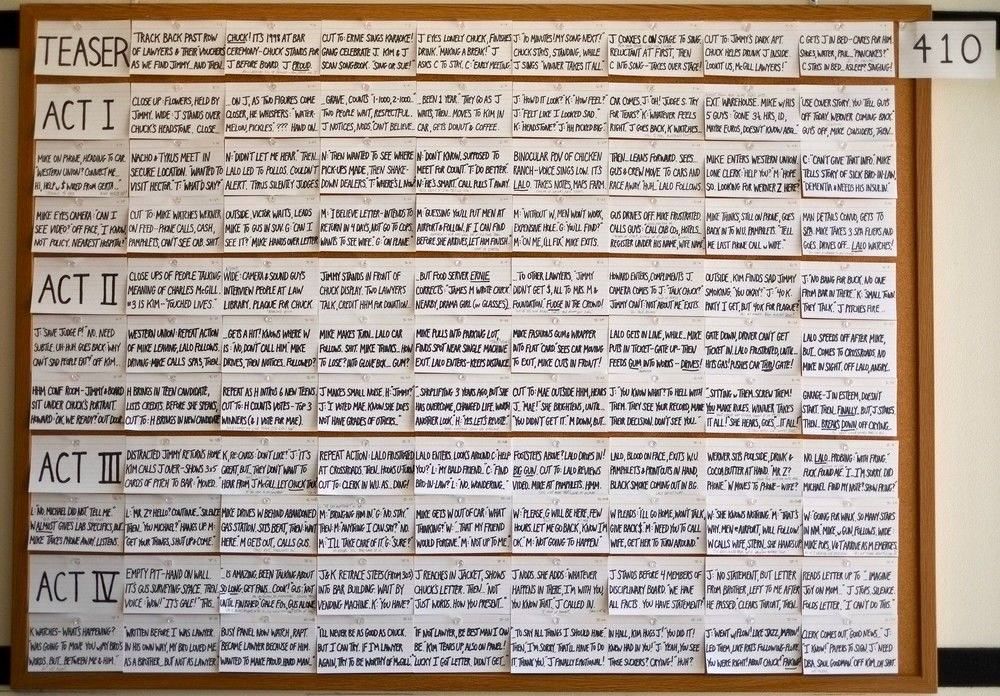
Writers like to organize their story into beats and organize them in a act-wise layout.
If there is one book that all writers are asked to read, it is Blake Snyder’s Save The Cat. In this book the author talks of a 15 point structure that all writers must stick to, if they want their writing to make it to the screen. This structure is presented in much the same way as the board you see above. Roughly, it looks like this.
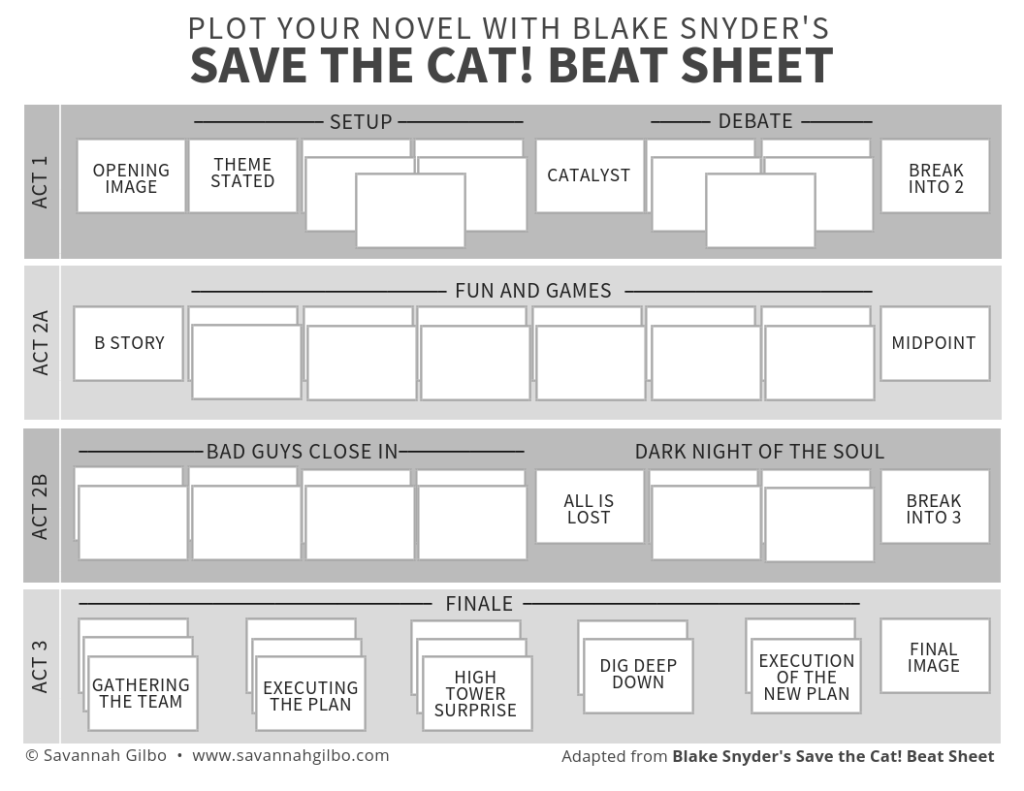
Having had an opportunity to speak to some really seasoned writers in the Kannada Film Industry, we have come to realize just how important it is to map screenplays in this way.
Each post-it note that goes up on the board is called an index card. Index cards capture the following fields of information
- The scene heading
- A brief synopsis of the scene
Blake Snyder, in his book Save The Cat, advises writers to capture two more fields in each index card
- The key emotional shift that must be accomplished
- The key (usually 2) characters who are in conflict in that scene
Additionally, writers may want to capture an additional field called “page-target”. This would be the page number that the scene must show up on in the final screenplay. For example, the first act break must happen on page number 25, in a 110 page screenplay.
Most writers simply capture synopsis and (at-best) the scene heading. But a few rigorous writers capture the other 3 fields as well.
Until version 0.5.2 of Scrite, it was possible to only capture synopsis in the structure canvas. With version 0.5.3 and beyond, it’s possible to capture a lot more.
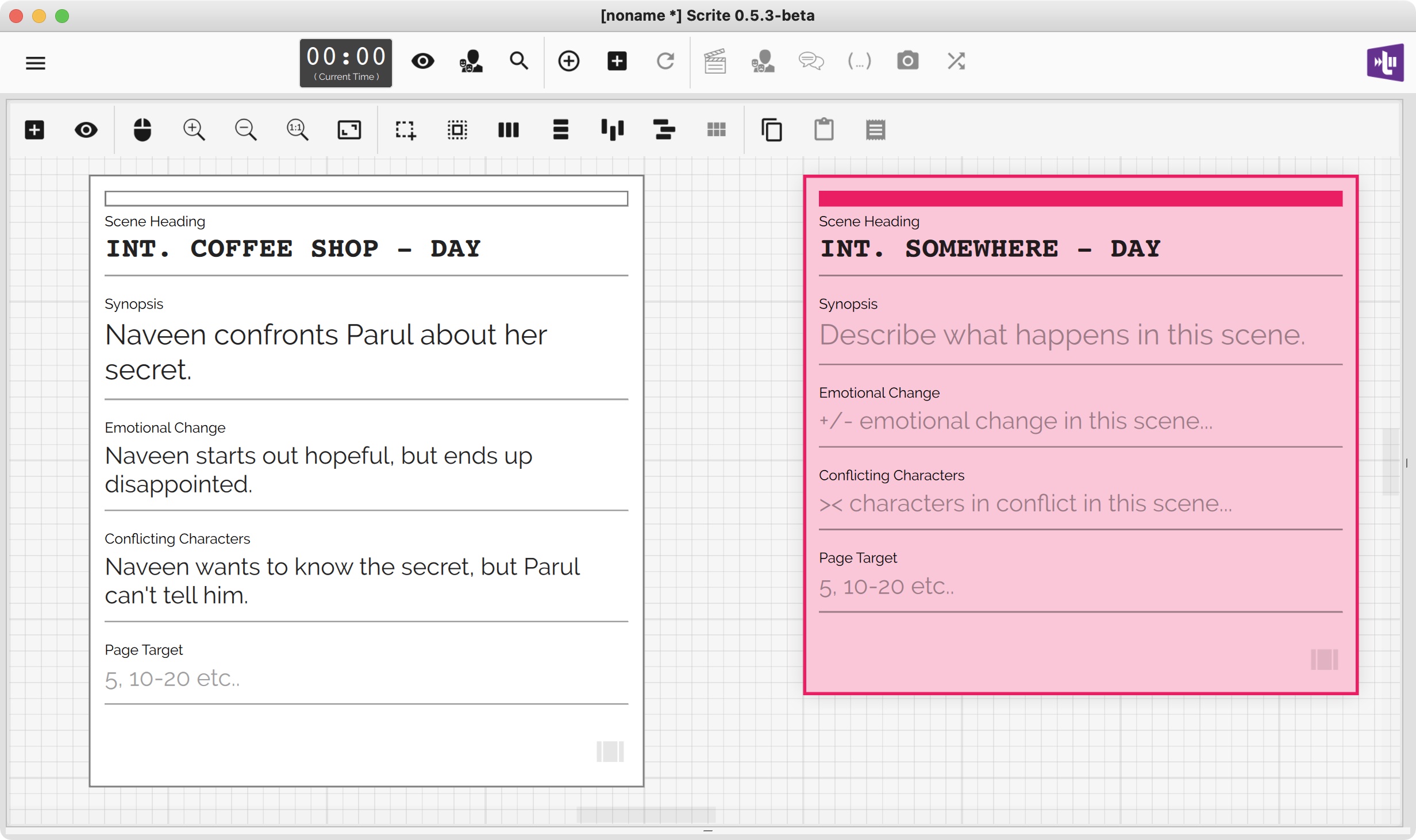
Whenever you add a scene on the Structure Canvas, you will be presented with an Index Card in which you can type the scene heading, synopsis, emotional change, conflicting characters and optionally the page target.
Just like you could drag and drop scenes from Structure to the Timeline to craft your scene sequence, you can now drag and drop index cards to the timeline.
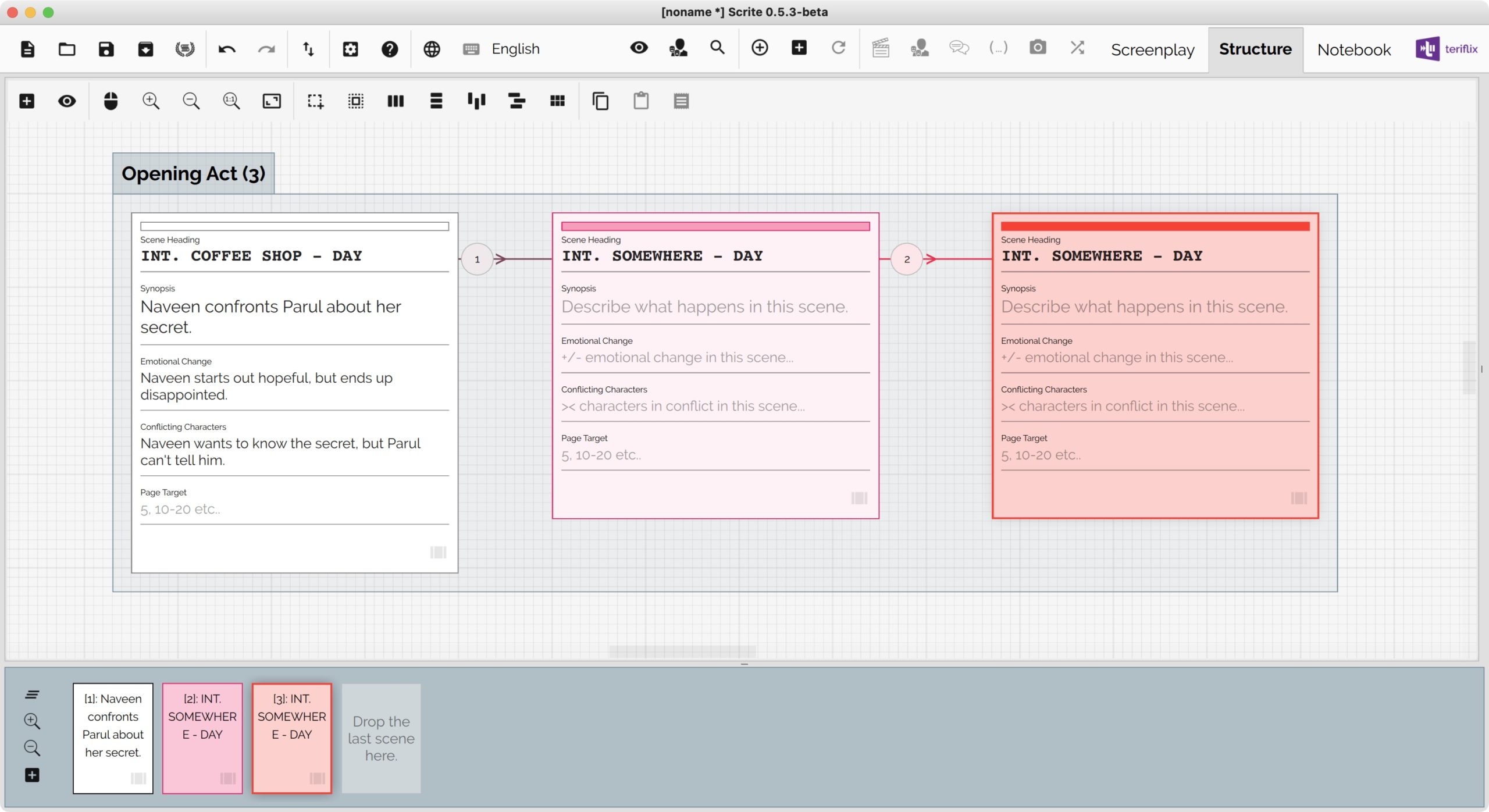
With 0.5.3, in addition to showing the connector lines between scenes, you will also notice index cards neatly packed into their own act-layout-box.
As you add breaks (Ctrl+Shift+B) and add more scenes (Ctrl+Shift+N), the index cards on the structure attempt to automatically organize themselves into a act-wise-beat-box-layout.
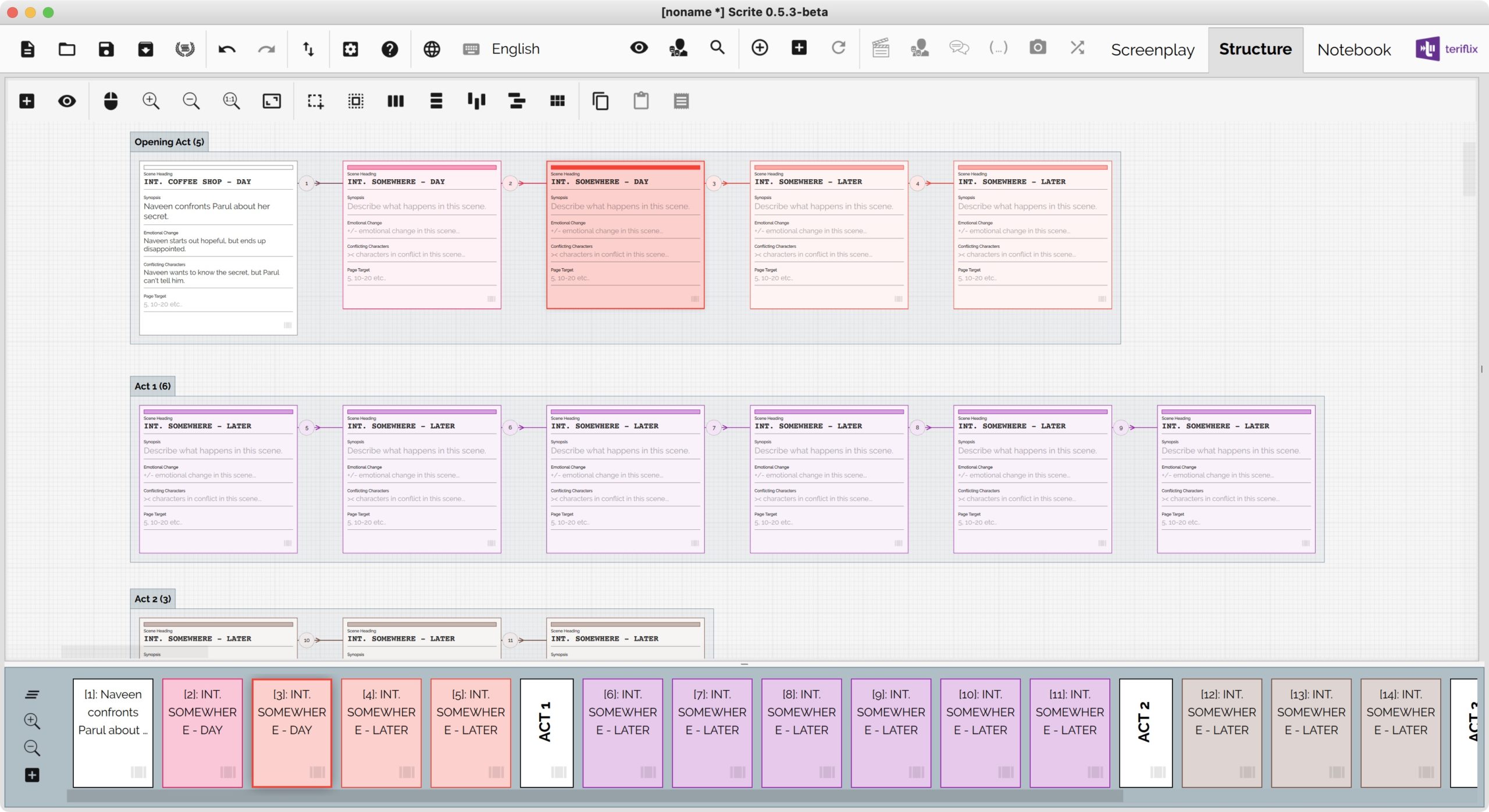
You can still move the index cards around and place them anywhere you like in the structure canvas.
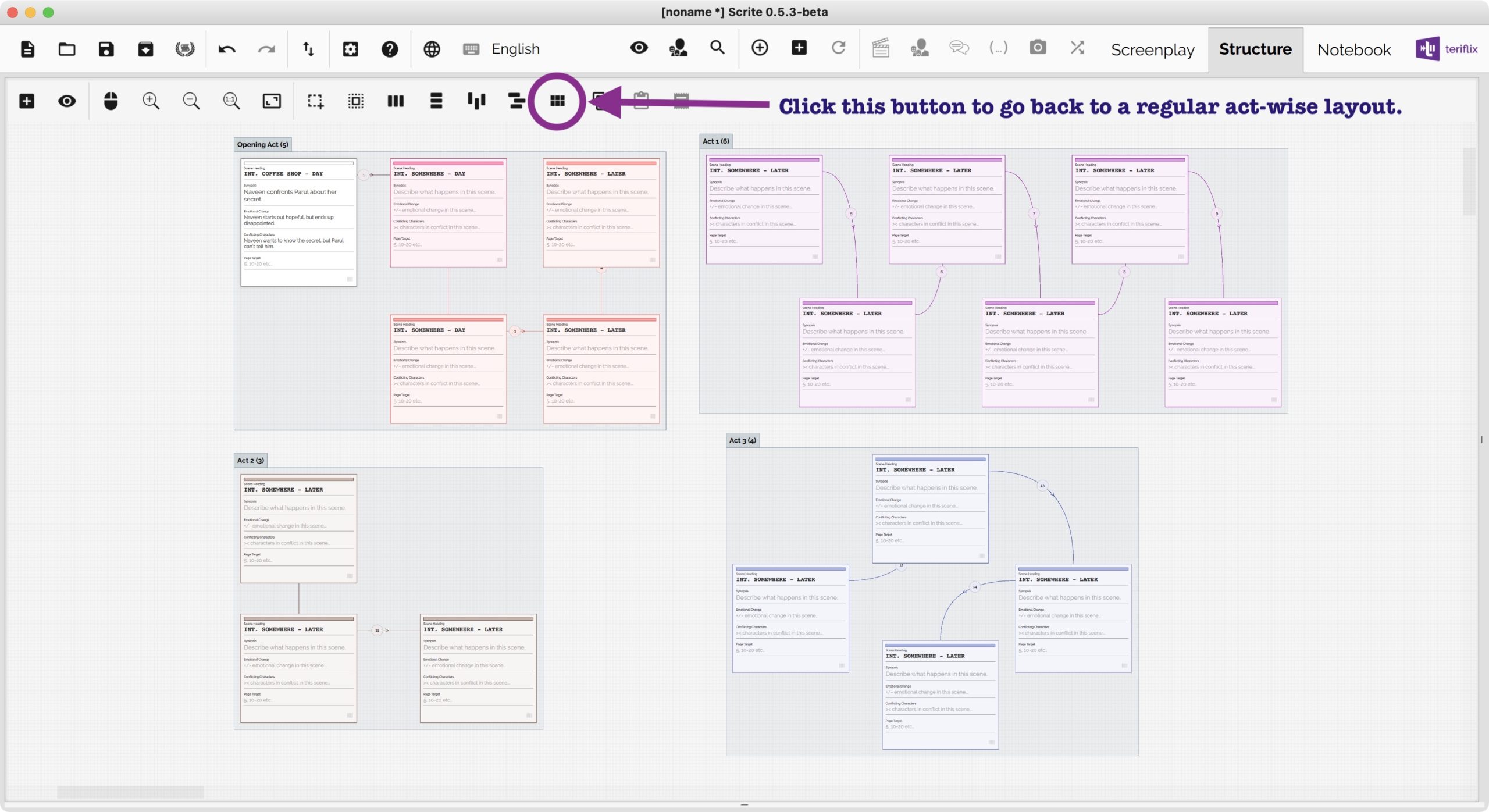
Just know that you can click on a new layout button in the toolbar (as shown in the screenshot above) to go back to a more traditional layout of scenes.
In a future update we plan to introduce options to (a) validate a screenplay against the intended page targets and (b) provide access to a bunch of ready made structure templates for you to build your screenplay on.
Update / download the latest version to try out this feature.